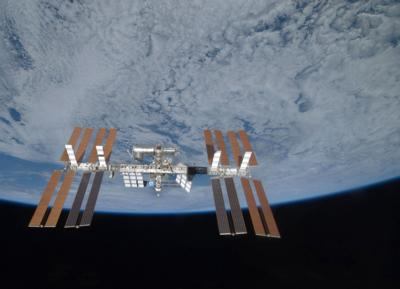Mon, Jun 14, 2021
The First Targeted Flight Opportunity Will Occur Between Fall Of 2022 And Mid-2023
NASA is seeking proposals for two new private astronaut missions to the International Space Station as part of the agency’s efforts to open space to more people than ever before. With these opportunities, US commercial companies will continue to play an essential role in establishing a sustained presence in low-Earth orbit (LEO) through the agency’s Commercial LEO Development Program.

The first targeted flight opportunity will occur between fall of 2022 and mid-2023 and the second will occur between mid-2023 and the end of 2023. Proposals are due Friday, July 9, 2021 at 5 p.m. EDT.
A private astronaut mission involves U.S. commercial spacecraft transporting private astronauts to the space station, where they conduct activities aboard the orbiting laboratory or a commercial structure attached to it. NASA is enabling up to two short-duration private astronaut missions per year.
“This year is truly a renaissance for human spaceflight both as we fly NASA and international partner astronauts on U.S. commercial crew spacecraft to the International Space Station and also as we see the expansion of private astronaut missions,” said Phil McAlister, director of commercial spaceflight development at NASA Headquarters. “As more people fly to space and do more things during their spaceflights, it attracts even more people to do more activities in low-Earth orbit, and reflects the growing market we envisioned when we began the Commercial Crew Program 10 years ago.”
The new targeted flight opportunities will be the second and third private astronaut missions to the International Space Station. NASA signed an agreement with Axiom Space for the first private astronaut mission, to take place no earlier than January 2022.
Each of the new missions may be up to 14 days. Specific dates are dependent on spacecraft traffic to the space station and in-orbit activity planning and constraints. Private astronaut missions must be brokered by a U.S. entity and use U.S. transportation spacecraft that meet NASA’s International Space Station visiting vehicle requirements, policies, and procedures.
More News
He Attempted To Restart The Engine Three Times. On The Third Restart Attempt, He Noticed That Flames Were Coming Out From The Right Wing Near The Fuel Cap Analysis: The pilot repor>[...]
Make Sure You NEVER Miss A New Story From Aero-News Network Do you ever feel like you never see posts from a certain person or page on Facebook or Instagram? Here’s how you c>[...]
From 2009 (YouTube Edition): Leading Air Show Performers Give Their Best Advice for Newcomers On December 6th through December 9th, the Paris Las Vegas Hotel hosted over 1,500 air >[...]
Aero Linx: NASA ASRS ASRS captures confidential reports, analyzes the resulting aviation safety data, and disseminates vital information to the aviation community. The ASRS is an i>[...]
“For our inaugural Pylon Racing Seminar in Roswell, we were thrilled to certify 60 pilots across our six closed-course pylon race classes. Not only did this year’s PRS >[...]
 NTSB Final Report: Rutan Long-EZ
NTSB Final Report: Rutan Long-EZ ANN FAQ: Turn On Post Notifications
ANN FAQ: Turn On Post Notifications Classic Aero-TV: ICAS Perspectives - Advice for New Air Show Performers
Classic Aero-TV: ICAS Perspectives - Advice for New Air Show Performers ANN's Daily Aero-Linx (06.28.25)
ANN's Daily Aero-Linx (06.28.25) Aero-News: Quote of the Day (06.28.25)
Aero-News: Quote of the Day (06.28.25)



